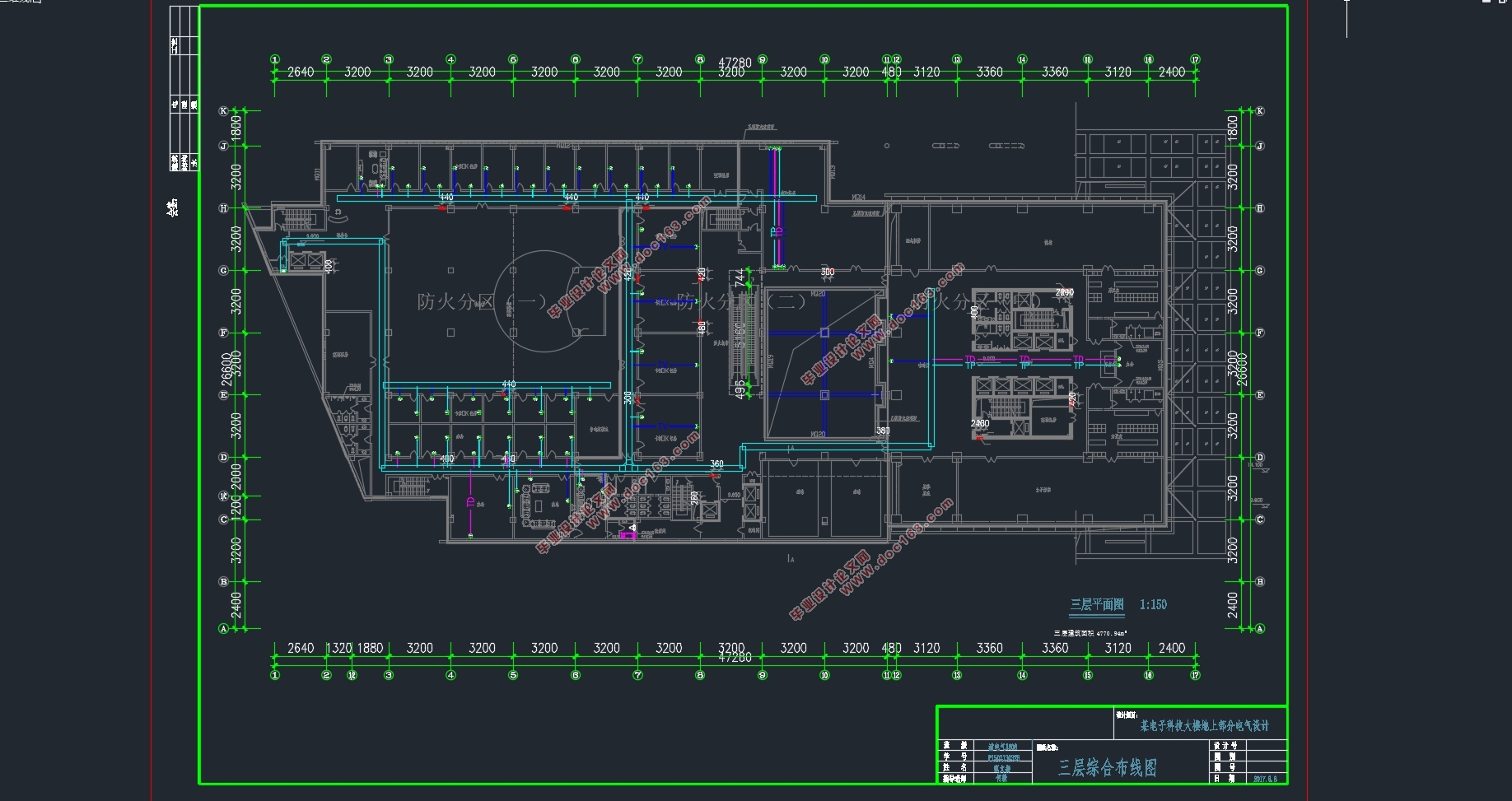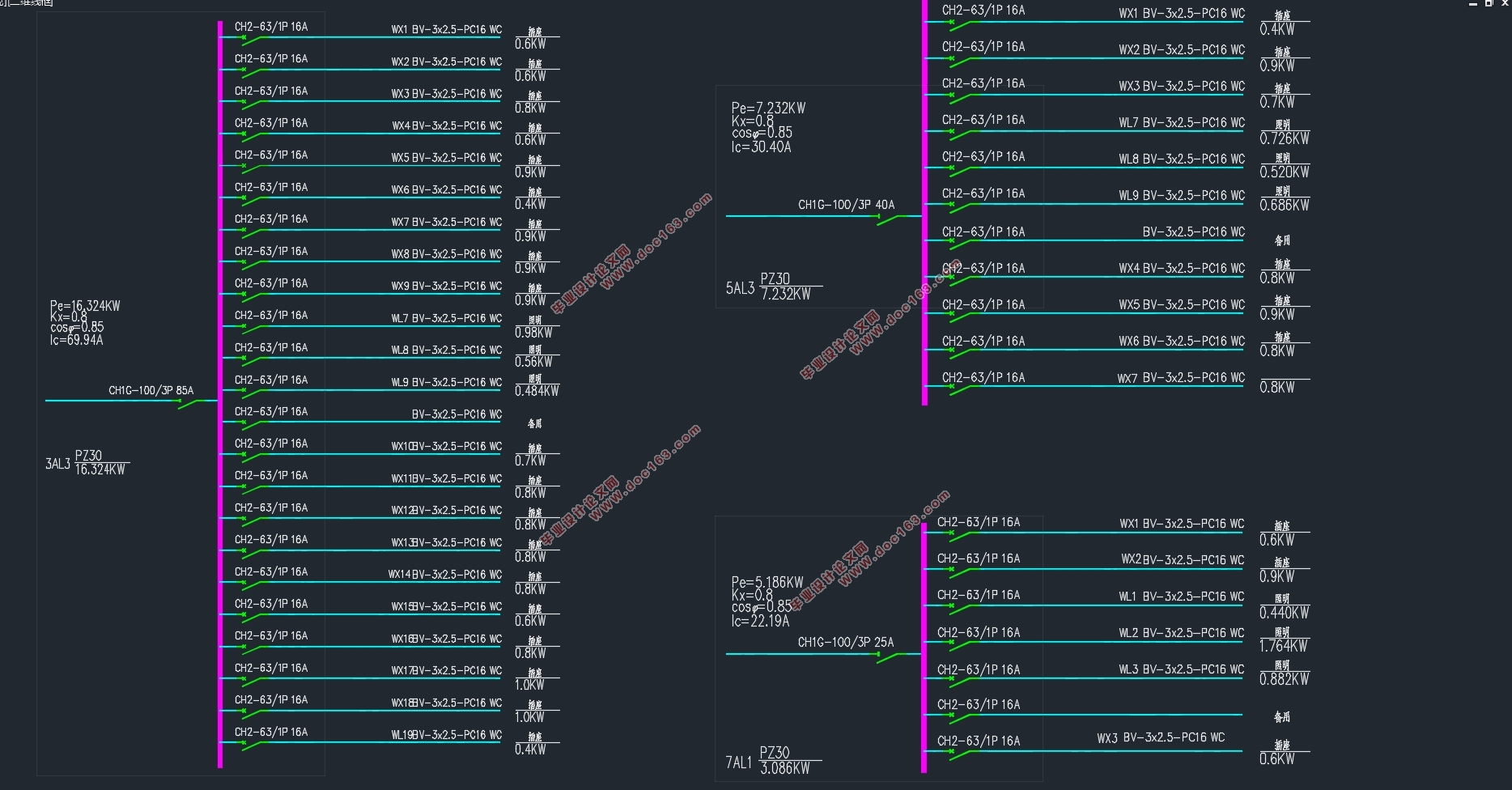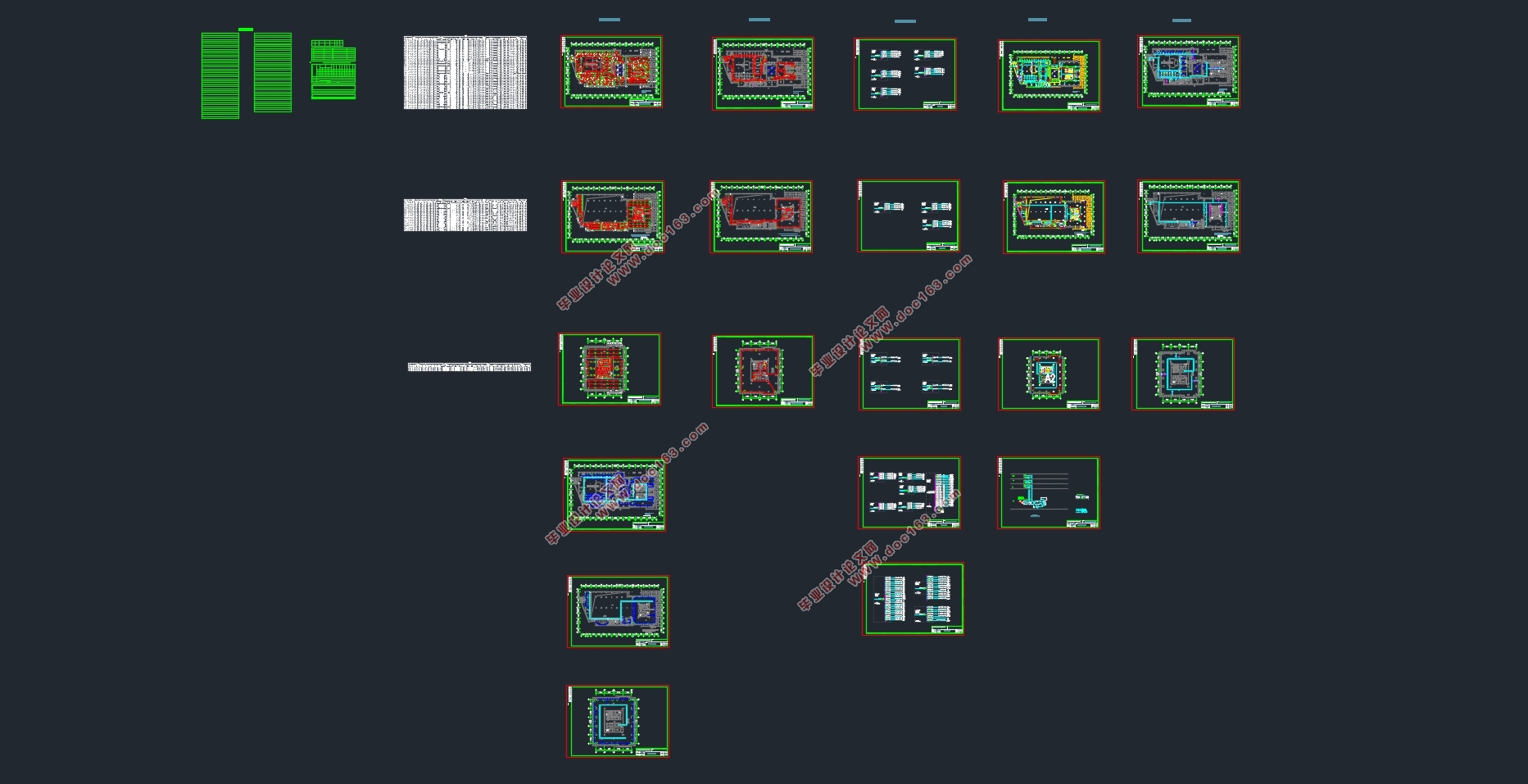某电子科技大楼地上部分电气设计(附CAD电气图)

1.无需注册登录,支付后按照提示操作即可获取该资料.
2.资料以网页介绍的为准,下载后不会有水印.资料仅供学习参考之用.
密 惠 保
某电子科技大楼地上部分电气设计(附CAD电气图)(任务书,开题报告,论文说明书11600字,CAD图纸21张)
摘 要
本设计主要是对电子科技大楼地上部分电气综合布线和建筑设备监控设计。整个设计主要根据国家相关的标准和规范,进行合理的规划和布置。
照明系统设计包括照度、眩光、功率和电压损失的计算,断路器、导线和电缆等设备的选型,灯具型号和插座的选择和平面布置,照明配电干线平面图和系统图的绘制等。
综合布线系统设计包括依据规范进行合适的线路布置,信息插座的布置,工作区子系统,水平子系统,干线子系统,设备间子系统的设计等。
还包括建筑设备监控设计,有线电视系统的设计。
关键词:照明系统 综合布线系统 建筑设备监控系统 有线电视系统
The design for overground electrical generic cabling system and building equipment monitoring of electronic technology building
Abstract
The main content of the design is overground electrical generic cabling system and building equipment monitoring of Electronic Technology Building The design is mainly based on the relevant national standards and norms to make reasonable planning and arrangement.
[来源:http://www.think58.com]
The design of lighting system includes the calculation of the intensity of illumination, glare, power and voltage loss.Circuit breakers, wires and cables and other equipment selection, the choice and layout of lamps and lanterns models and sockets,the plan and system diagram of lighting distribution main line.
The design of the generic cabling system includes the appropriate circuit layout according to the specification,layout of information socket,design of working area subsystem, horizontal subsystem, trunk subsystem, and equipment subsystem, etc.
According to the relevant lightning protection grounding specifications, reasonable arrangement of lightning protection devices and grounding devices, etc.
It also includes the design of monitoring and control of building equipment, the design of cable TV system.
KeyWords: Lighting system;Generic cabling system;Lightning protection and grounding system;Building equipment monitoring system;Cable TV systems
[资料来源:http://think58.com]
1.1工程概况
本工程建筑物:电子科技大楼(地上部分)。占地面积:7860.3m2,建筑面积69468m2 ,共二十三层(不含地下),为一类高层建筑,耐火等级为一级本设计主要选择三层,五、六层,七~十三层。本工程为桩基框架结构,所有混凝土板、桩均为现浇。
1.2 设计概述
本设计对象为某电子科技大楼(地上部分),设计内容包括:
1.照明系统:选择合理灯具,合理布置灯具与插座,根据规范和计算选择合适的导线与断路器,验证统一眩光值是否满足标准,校验线路的电压损失,以及进行必要的负荷计算。
2.室外智能化干线系统(有线电视、电话、网络)的设计:包括依据设计规范进行系统结构和功能的设计,设备的选型以及设备的布置等。
3.综合布线系统:选择合适的综合布线的设计等级,包括线缆的选择,配线架的选择等,根据具体要求选择信息插座,对有用区子系统进行合理的设计。
4.建筑设备监控设计:合理布置摄像头对重要的区域进行监控。
[来源:http://think58.com]




目 录
摘要.............................................................................................................................I [资料来源:THINK58.com]
ABSTRACT............................................................................................................II
第一章 系统概述....................................................................................................1
1.1 工程概况.......................................................................................................1
1.2 设计概述.......................................................................................................1
1.3设计依据........................................................................................................1
1.4负荷分级........................................................................................................2
1.5负荷计算........................................................................................................2
1.5.1计算负荷...............................................................................................2
1.5.2需要系数...............................................................................................2 [资料来源:http://www.THINK58.com]
1.5.3计算电流...............................................................................................3
1.6 线缆初选.......................................................................................................5
1.6.1线缆类型的选择...................................................................................5
1.6.2导线和电缆截面的选择.......................................................................5
1.7 断路器的选择...............................................................................................6
1.7.1 低压断路器的选择.............................................................................6
1.7.2 低压断路器的选择性配合.................................................6
1.7.3 断路器的产品选型.............................................................................6
第二章 照明系统....................................................................................................9
2.1 概述...............................................................................................................9
2.2 照明计算.......................................................................................................9
2.2.1 光源和灯具的选择.............................................................................9
2.2.2 照明设计参考标准.............................................................................9
2.2.3 利用系数法.......................................................................................10
2.2.4 各类房间照度计算...........................................................................12
2.2.5 负荷计算...........................................................................................15
2.2.6 按线路电压损失校验.......................................................................22 [资料来源:www.THINK58.com]
2.2.7 统一眩光值计算...............................................................................23
2.3 照明平面图布置.........................................................................................23
2.3.1 室内灯具布置...................................................................................23
2.3.2 室内插座布置...................................................................................23
2.4照明配电系统设计......................................................................................23
2.4.1 照明配电系统设计原则...................................................................23
2.4.2 照明配电系统设计方案...................................................................23
第三章 室外智能化干线系统...........................................................................24
3.1 有线电视系统.............................................................................................24 [版权所有:http://think58.com]
3.1.1 系统概述...........................................................................................24
3.1.2 设计原则...........................................................................................24
3.1.3 设计依据...........................................................................................25
3.1.4 系统设计...........................................................................................26
3.2 宽带网络系统 ............................................................................................27
3.3 电话通信系统.............................................................................................29
第四章 综合布线系统设计...............................................................................30
4.1 综合布线系统与特点.................................................................................30 [资料来源:http://THINK58.com]
4.1.1 综合布线系统的概述.......................................................................30
4.1.2 综合布线系统的特点.......................................................................31
4.2 综合布线的设计等级选择.........................................................................31
4.3 综合布线系统设计.....................................................................................32
4.3.1 布线要求...........................................................................................32
4.3.2 布线系统的器件选择.......................................................................33
4.3.3 工作区的设计...................................................................................33
4.3.4 水平子系统的设计...........................................................................34
4.3.5 干线子系统的设计...........................................................................34
[版权所有:http://think58.com]
4.3.6 设备间设计.......................................................................................34
第五章 建筑设备监控设计...............................................................................34
5.1 热交换站的监控.........................................................................................34
5.2 空气处理机的监控.....................................................................................34
6.2.1 新风机组监控...................................................................................35
6.2.2 空调机组监控...................................................................................36
5.3 照明系统监控.............................................................................................37
参考文献..................................................................................................................38
致谢...........................................................................................................................40
